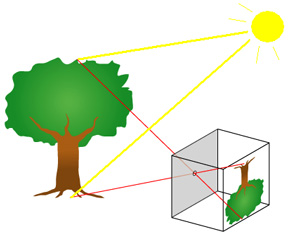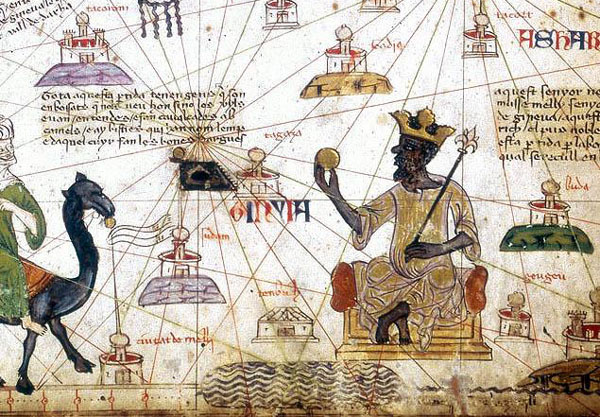[one_half]
It’s hard to imagine a world without photography. Billion dollar companies like Instagram and Canon are based on the idea of capturing light from a scene, creating an image from it, and reproducing that image. But doing so is impossible without the trailblazing work of the 11th century Muslim scientist, Ibn al-Haytham, who developed the field of optics and described how the first cameras work.
Working in the imperial city of Cairo in the early 1000s, Ibn al-Haytham was one of the greatest scientists of all time. To regulate scientific advancements, he developed the scientific method, the basic process by which all scientific research is conducted.

The basic principle of a pinhole camera
[/one_half]
[one_half_last]
When he was put under house arrest by the Fatimid ruler al-Hakim, he had the time and ability to study how light works. His research partially focused on how the pinhole camera worked. Ibn al-Haytham was the first scientist to realise that when a tiny hole is put onto the side of a lightproof box, rays of light from the outside are projected through that pinhole into the box and onto the back wall of it. He realised that the smaller the pinhole (aperture), the sharper the image quality, giving him the ability to build cameras that were incredibly accurate and sharp when capturing an image.
Ibn al-Haytham’s discoveries regarding cameras and how to project and capture images led to the modern development of cameras around the same concepts. Without his research into how light travels through apertures and is projected by them, the modern mechanisms inside everyone’s cameras would not exist.
[/one_half_last]
The ancient Greeks thought our eyes emitted rays, like a laser, which enabled us to see. The first person to realise that light enters the eye, rather than leaving it, was the 10th-century Muslim mathematician, astronomer and physicist Ibn al-Haitham. He invented the first pin-hole camera after noticing the way light came through a hole in window shutters. The smaller the hole, the better the picture, he worked out, and set up the first Camera Obscura (from the Arab word qamara for a dark or private room). He is also credited with being the first man to shift physics from a philosophical activity to an experimental one.
Source: independent | lostislamichistory




No Comments